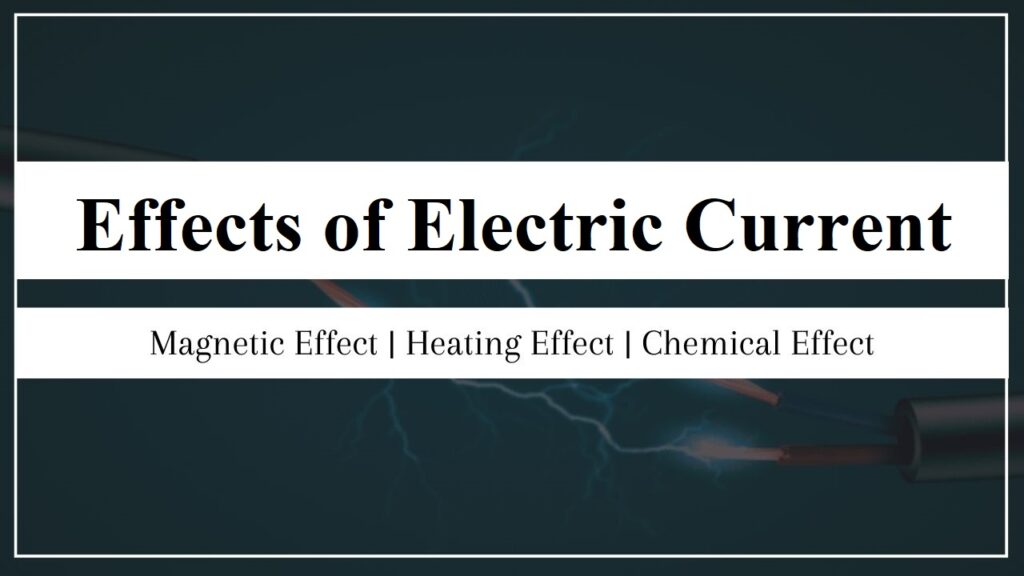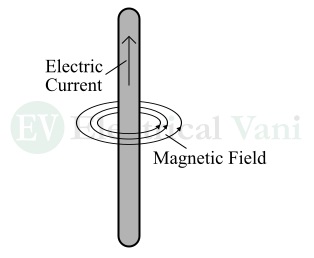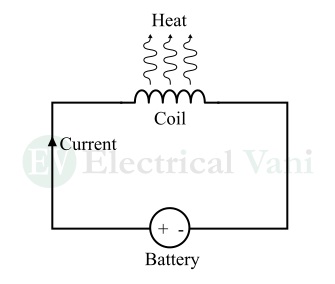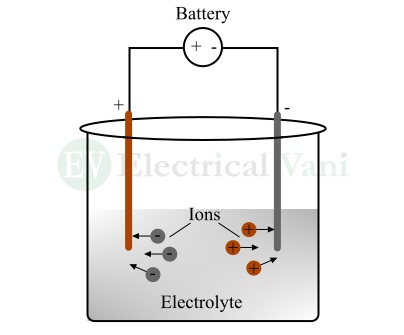In this article, I will explain the different effects of electric current. Electric current is defined as the flow of electric charge in a certain direction through a conducting medium like a metal wire, a semiconductor material, an electrolytic solution, etc. When electric current flows through a material, it results in various effects such as generation of heat, production of magnetic field, chemical reaction, etc. All these effects are referred to as effects of electric current. Hence, the effects of electric current can be defined as the phenomena that occur when electric current flows through a material.
In this article, I will explain the 3 major effects of electric current namely, the magnetic effect of electric current, the heating effect of electric current, and the chemical effect of electric current. The study of these effects is crucial in the field of electrical engineering.

Definition Electric Current
Electric current is defined as the movement or flow of electric charge carriers through a material in a specific direction. Therefore, the electric current is simply defined as the directed flow of particles of electricity, such as electrons, holes, or ions.
The strength of the electric current can be measured as the rate of flow of electric charge i.e.,
$$I = \frac{Q}{t}$$
Where Q is the charge measured in coulombs and t is the time measured in seconds.
The SI unit to measure the strength of electric current is Ampere (A).
After getting an overview of electric current. Let us now study the effects of electric current in detail.
Three Effects of Electric Current
When an electric current flows through a material, it exhibits several notable effects on the material. The following three are the main effects of electric current:
- Magnetic Effect of Electric Current
- Heating Effect of Electric Current
- Chemical Effect of Electric Current
Let us study these three effects of current in detail.
(1). Magnetic Effect of Electric Current
When a wire or conductor carries an electric current through it, a magnetic field is developed around the wire. This effect is called the magnetic effect of electric current.
The magnetic effect is one of the most crucial effects of electric current, as it plays a vital role in studying and analyzing the behavior and operation of most electrical machines like motors, generators, measuring instruments, and more.
It is considered the backbone of electric engineering. Therefore, it combined study of electricity and magnetism is called electromagnetism.
In 1820, Hans Christian Orsted, a Danish Physicist, discovered the magnetic effect of electric current.
It is experimentally demonstrated that the direction of the magnetic field is perpendicular to the direction of the electric current through the wire.

However, the magnetic field produced by an electric current through a straight wire is determined by the Right-Hand Thumb Rule. According to this rule, if the current-carrying wire is held in the right hand and the thumb is stretched parallel to the wire and represents the direction of the current, the curled figures will show the direction of the magnetic field around the wire.
This rule can be also applied to determine the direction of the magnetic field produced by an electric current flowing through a coil of many turns like the windings of an electric motor.
Magnetic Effect of Electric Current Examples:
The magnetic effect of electric current is used in designing various types of electromagnetic devices. Some common examples of devices are listed below that utilize the magnetic effect of electric current to work:
- Telephone
- Electric motors
- Electric generators
- Loudspeakers
- Electromagnets
- Electric measuring instruments, etc.
Application of Magnetic Effect of Electric Current:
The following are common applications of the magnetic effect of electric current:
- The magnetic effect of electric current is utilized in developing powerful electromagnets used in cranes, extracting iron pieces from garbage, producing magnetic fields in electrical machines, and more.
- The magnetic effect of electric current is used to design various household appliances, such as load speakers, electric bells, telephones, and many more.
- The magnetic effect is also used in designing various electrical machines, such as transformers, electric motors, generators, alternators, relays, etc.
Now, let us study another important effect of electric current which is the heating effect of electric current.
(2). Heating Effect of Electric Current
The heating effect is another important effect of electric current that we observe in our day-to-day lives. For example, electric bulbs, electric heaters, immersion rods, and more.
The heating effect of electric current is also crucial in developing various important appliances used in households and industries. Therefore, we have to study this effect to understand the world of electrical engineering.

The heating effect of electric current can be defined as follows:
When an electric current flows through a wire or conductor, the wire gets heated and produces heat. This is called the heating effect of electric current.
This effect of electric current is mainly due to the resistance of the material of the wire in the flow of electric current. Hence, different materials produce different amounts of heat on the flow of current depending on their electrical resistance.
The heating effect of electric current can be explained by Joule’s Law of Heating, which states that when a conductor of resistance R carries an electric current of I ampere for a time of t seconds, then the amount of heat produced by the current in the conductor is given by,
$$H=I^2 Rt$$
From this equation, it is clear that the amount of heat (H) is directly proportional to the resistance of the conductor. Hence, a conductor with higher electrical resistance produces a high amount of heat and vice-versa.
Examples of Heating Effect of Electric Current:
We observe the heating effect of electric current in our everyday life. Some common examples of the heating effect of electric current are as follows:
- Heating of the filament of an electric heater on the passes of current through it.
- Heating of an electric iron.
- Heating of an electric bulb when it is turned on.
- Heating of water when an immersion rod is dipped in it, etc.
Application of Heating Effect of Electric Current:
The heating effect of electric current is widely used in developing the following electrical devices:
- Electric iron
- Electric heater
- Electric kettle
- Immersion rod
- Electric lamp/bulb
- Electric fuse, etc.
Let us now explore the third important effect of electric current which is the chemical effect.
(3). Chemical Effect of Electric Current
When an electric current is made to pass through a conduction solution, it causes some chemical reactions to happen. This effect is called the chemical effect of electric current. The conducting solution of electric current is called an electrolyte.

The chemical effect of electric current is widely used in developing electric cells and batteries.
Example of Chemical Effect of Electric Current:
As per the chemical effect of electric current, when electric current passes through an electrolytic solution it results in some chemical reactions to occur in the solution. Some common examples of the chemical effects of electric current are given below:
- The formation of gas bubbles in the solution on the passes of electric current.
- Deposition of metals on electrodes on the flow of current.
- Variation in the color of the solution, etc.
All these are the commonly notable examples of the chemical effect of electric current.
Application of Chemical Effect of Electric Current:
The following are some major applications where the chemical effect of electric current is used:
- The chemical effect of electric current is used in various electrolysis
- It is used in electroplating.
- It is also used in metal refining and extracting metals from ores
- It is also employed for decomposing compounds into their constituents.
Conclusion
Hence, it is very important to study the effects of electric current because they are crucial in designing and understanding operations of the various electric devices like motors, generators, lamps, heaters, electroplating, metal extraction, and many more.
In this article, I have explained the three main effects of electric current (i.e., magnetic effect, chemical effect, and heating effect) with their examples and applications in real life.
If you have any queries related to the topics covered in this article, please let me know in the comment section, and I will answer shortly.